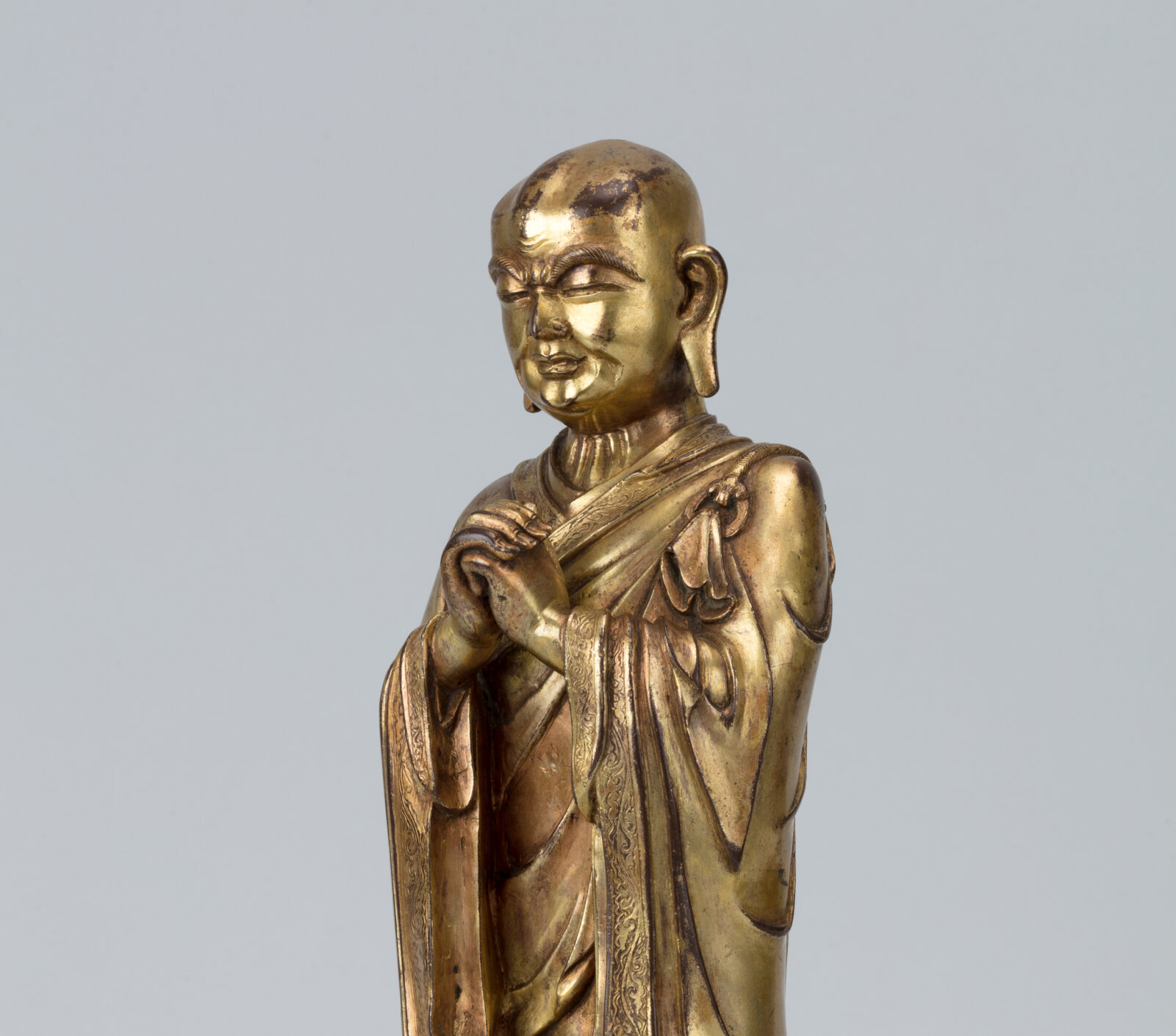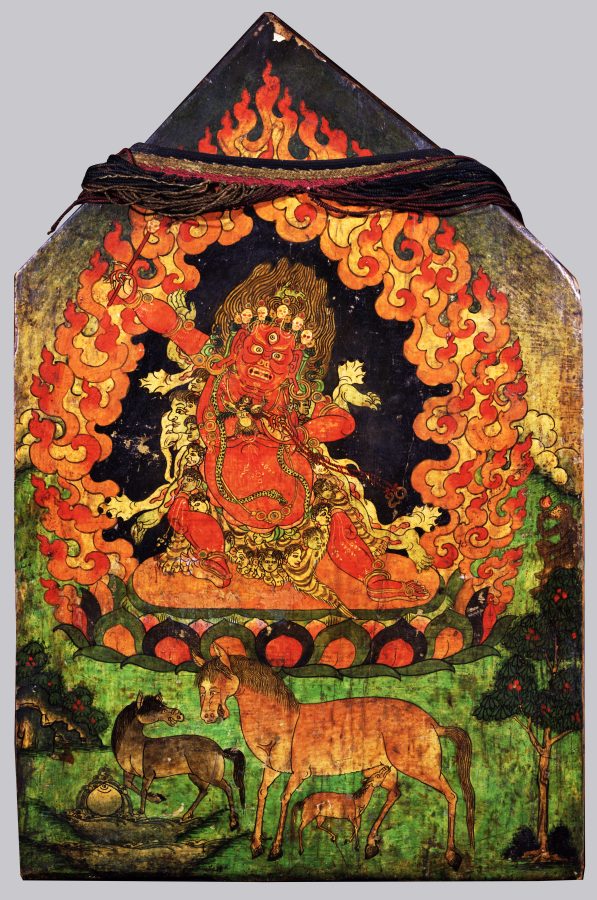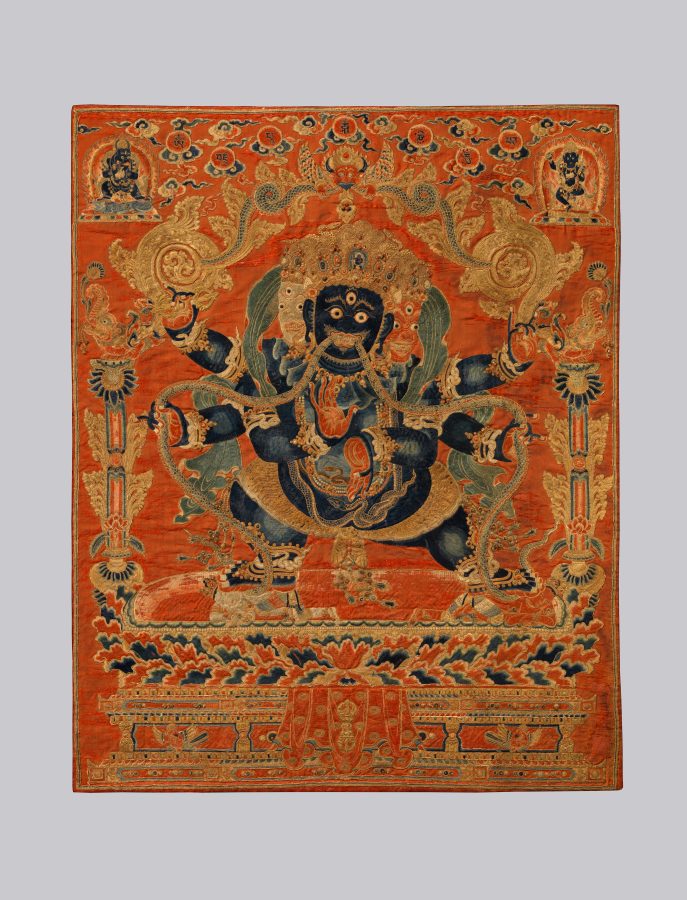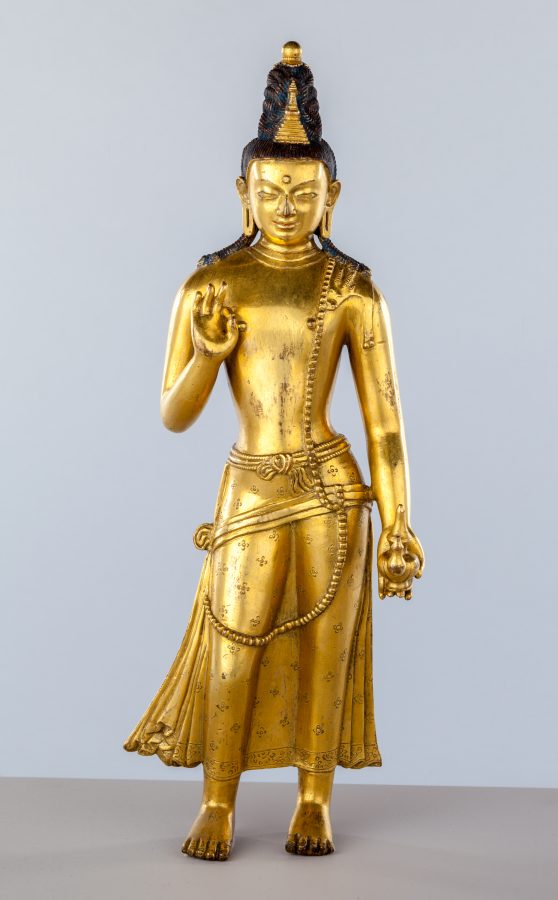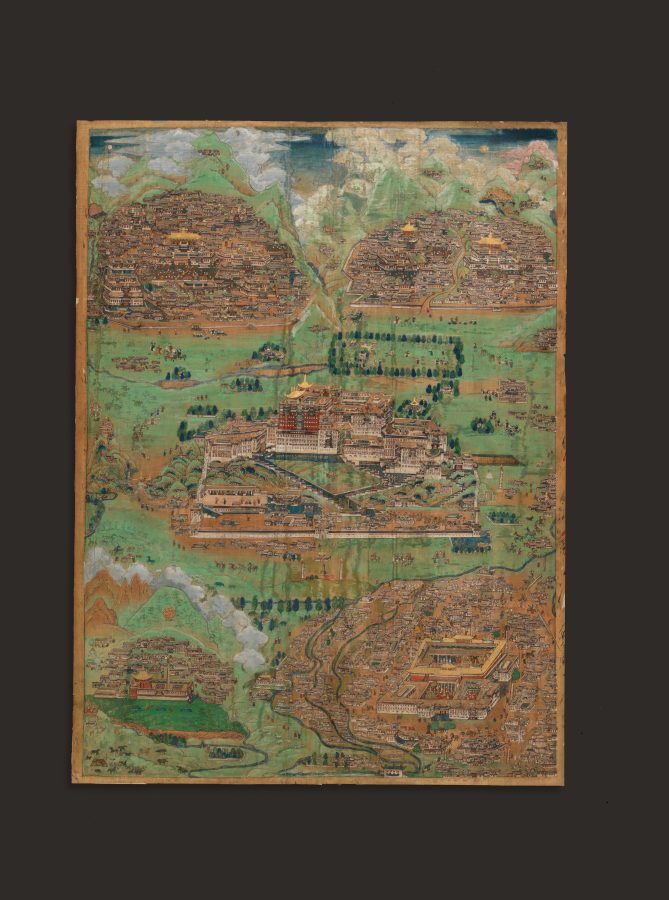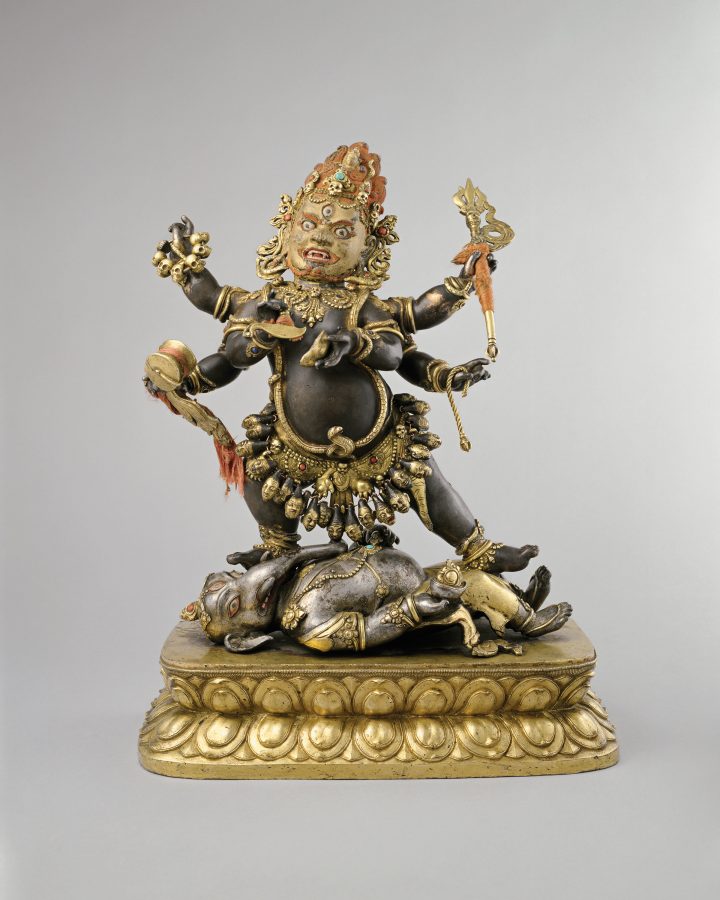Tibet or Inner Mongolia
18th - early 19th century (ca 1757-1804)
Rubin Museum of Himalayan Art
C2009.4
The Potala Palace, epicenter of Tibetan political and religious governance, centers key monuments in Lhasa and the surrounding area. Remarkably accurate depictions of buildings emphasize their distinctive architectural features. Yet rather than create a simple recording of their appearance, the artist chose an oblique aerial view, making subtle adjustments to perspective, as well as repositioning structures in order to both increase recognizability and allow the viewer to see key components of these monuments. For instance, the roof of the Jokhang Temple (lower right), a focus of pilgrimage and devotion in Tibetan Buddhism, has been removed to reveal its principal image, the Jowo Shakyamuni sculpture.
Such paintings served as substitutes for places visited on pilgrimage or personal remembrance, here suggested by the inclusion of a lesser-known monastery, Sangpu Neutok (lower left), located south of Lhasa. Mongolians became frequent pilgrims to Lhasa starting in the seventeenth century, also traveling for higher education at the great Geluk monasteries of Sera (top right) and Drepung (top left) or the Chakpori Medical College (left center). Numerous vignettes of pilgrimage and ritual activity depict Tibetans and Mongolians traveling, performing devotional acts, attending teachings, engaging in philosophical debates, and practicing archery.
See full collection record
Learn more about the Potala Palace and its depiction
Learn more about mapping sacred sites
